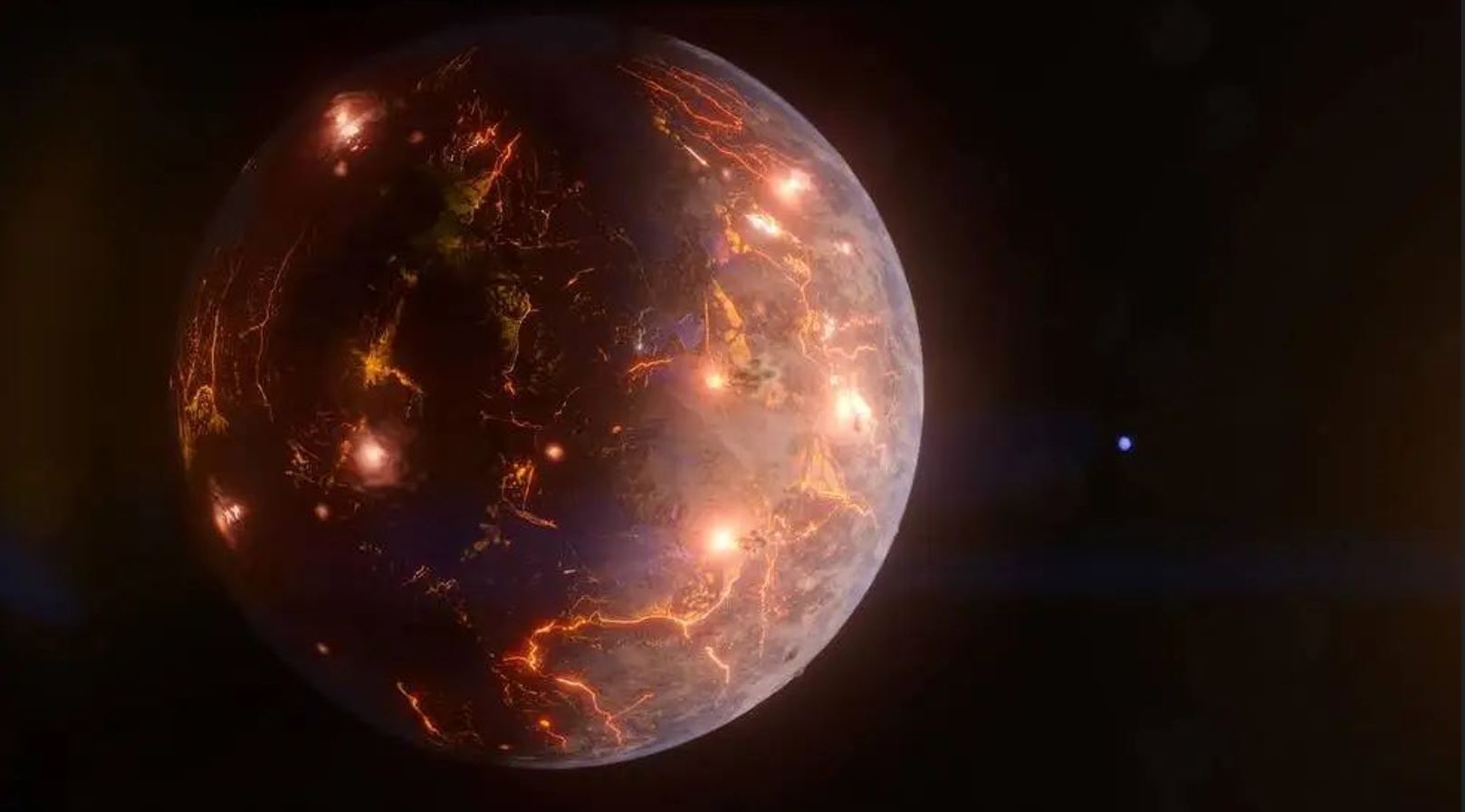

After a few decades of simply finding exoplanets, humanity is starting to be able to do something more – peer into their atmospheres. The James Webb Space Telescope (JWST) has already started looking at the atmospheres of some larger exoplanets around brighter stars. But in many cases, scientists are still developing models that both explain what the planet’s atmosphere is made of and match the data. A new study from researchers at UC Riverside, NASA’s Goddard Spaceflight Center, American University, and the University of Maryland looks at what one particular atmospheric process might look like on an exoplanet – volcanism.
There are a few caveats in the paper, though. First, the model itself is for an “exoEarth” – a planet equivalent to Earth circling a Sun-like star. Even JWST isn’t powerful enough to capture the data spectrographic data of an atmospheric planet of this size, no matter how close it is. So, the authors make some assumptions about the next generation of large in-space telescopes – specifically, they refer to the LUVOIR project we’ve reported on before.
Assuming the next great space telescope can collect data as planned, it is still necessary to understand the data that comes in. In particular, understanding what the dips in spectra are caused by and what, if any, specific pattern emerges that might be related to active volcanoes.
Those volcanoes would likely be spewing out sulfur dioxide and sulfate aerosols into the atmosphere of the exoEarth. To model the introduction of those materials, the authors turned to a simulation program called the Goddard Earth Observing System Chemistry Climate Model (GEOSCCM). This model allows researchers to manipulate certain aspects of the atmosphere and watch the results over long periods.
In this particular case, the researchers modeled the effect of a volcano by injecting one of several quantities of sulfur dioxide into the atmosphere every three months for four years. They then observed the effects for some time after the volcano stopped “erupting” (i.e., when they stopped injecting sulfur dioxide into the model) so they could conclude the atmospheric composition of a planet in recovery from a sustained eruption.
Three main spectra lines stood out in the researcher’s analysis. All three were related to oxygen – O2 (the breathable stuff), O3 (ozone), and good old H20. Each of these three spectral signals underwent serious changes around the time of the eruptions, and then those changes were reversed once the eruptions ceased.
One particular feature that stood out was the spectral line for ozone (O3). It continually decreased during the eruption phase, likely caused by its transformation into sulfuric acid. After the eruptions, however, the quantity of ozone in the modeled atmosphere began to creep up again, showing a similar resilience to our own ozone layer that had been impacted by the use of CFCs last century.
With their expected results in hand, the researchers calculated how long they thought it would take a telescope like LUVOIR to observe a particular exoplanet to find these tale-tell spectral lines that would indicate whether there was active volcanism on the planet. Ozone was relatively simple, as it required only 6 hours of observation. In contrast, water vapor was trickier to quantify, as it could be as short as 9 hours or impossible altogether, depending on the variability in the signal.
Studies like this will be crucial to the success of any future large space telescope mission, and there will be plenty of things for LUVOIR, or its equivalent, to look at when (and if) it launches. Therefore, plenty of other studies detailing what features we can expect to see will be necessary in the near future. But for now, at least we’ll know what to look for if we see volcanoes on a planet just like our own.
Learn More:
Ostberg et al – The Prospect of Detecting Volcanic Signatures on an ExoEarth Using Direct Imaging
UT – A Super-Earth (and Possible Earth-Sized) Exoplanet Found in the Habitable Zone
UT – Can JWST Tell the Difference Between an Exo-Earth and an Exo-Venus?
UT – Earth is an Exoplanet to Aliens. This is What They’d See
Lead Image:
LP 791-18 d, shown here in an artist’s concept, is an Earth-size world about 90 light-years away.
Credit: NASA’s Goddard Space Flight Center/Chris Smith (KRBwyle)
NASA continues to progress with the development of the Nancy Grace Roman Space Telescope (RST),…
Our neighbour, the Large Magellanic Cloud (LMC), is rich in gas and dust and hosts…
New research on locomotion techniques that could be used in space exploration is constantly coming…
White dwarfs are the remnants of once brilliant main sequence stars like our Sun. They're…
We all know that asteroids are out there, that some of them come dangerously close…
It’s a familiar sight to see astronauts on board ISS on exercise equipment to minimise…